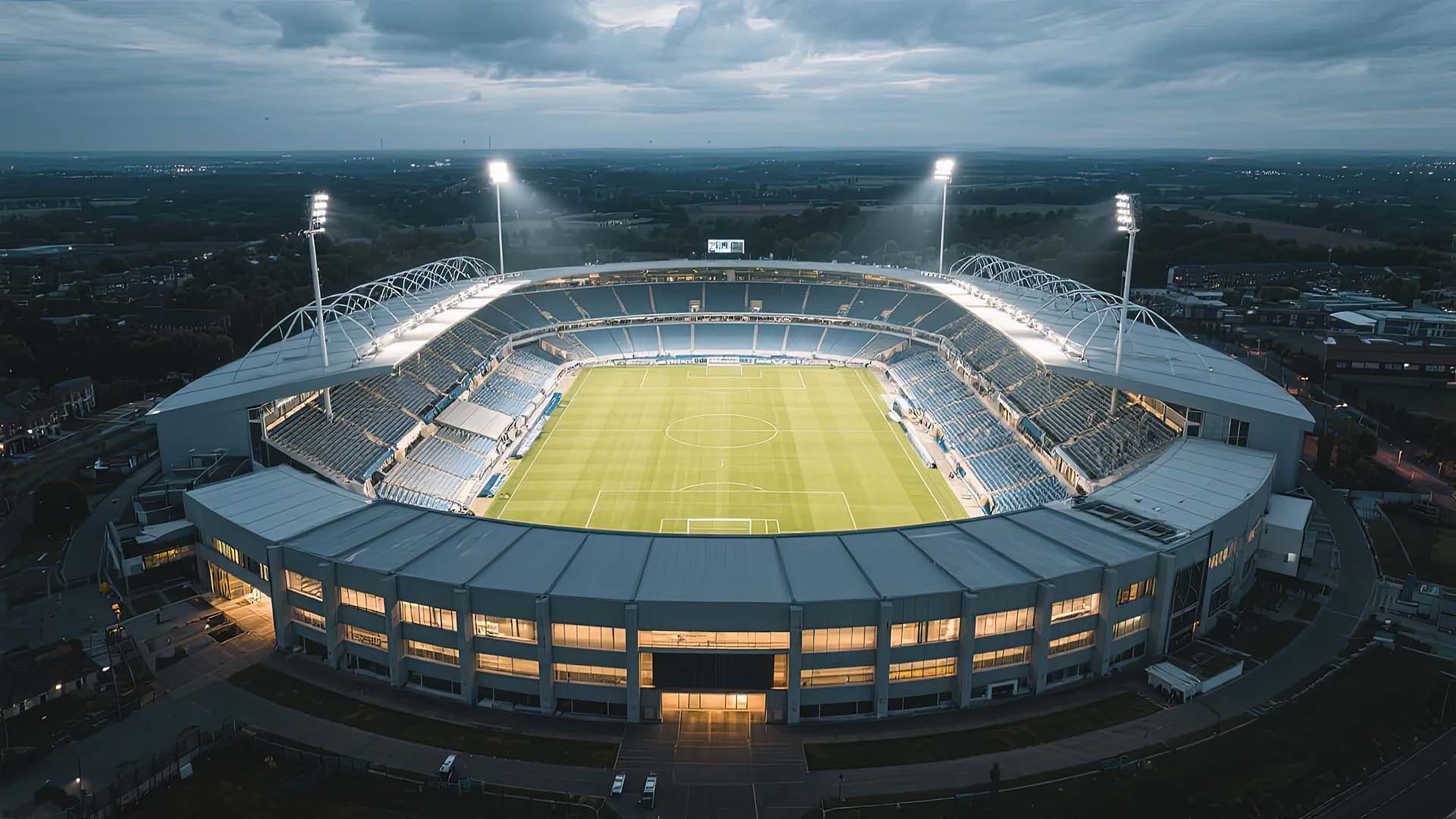16 Ideas for a Corporate Team Retreat
16 Ideas for a Corporate Team Retreat
Are you looking for ways to strengthen team bonds and boost morale within your company? Planning a corporate retreat can be the perfect solution to foster collaboration, encourage communication, and offer your team a well-deserved break from the daily grind. In today’s article, we’ll explore 16 activities that can transform your corporate retreat into an exciting yet productive experience.
1. Organize an Escape Room Challenge
Kick off your corporate retreat with an escape room challenge. This activity not only sharpens problem-solving skills but also promotes teamwork, as participants must work together to decipher clues and solve puzzles within a time limit. It’s an exciting way to break the ice and encourage creative thinking among team members.
2. Arrange Team Sports Activities
Incorporating team sports activities such as soccer, volleyball, or softball into your corporate retreat can energize your team and spark friendly competition. Plus, sports are a great way to get everyone moving and interacting in a relaxed environment. They help in building team spirit and can be tailored to the fitness level of your group to ensure everyone can participate.
3. Host a Trivia Night
A trivia night is a fantastic way to engage your team in a fun and intellectually stimulating game. Customize the trivia categories to include questions about your industry, the history of your company, or general knowledge to keep it relevant and entertaining. This activity fosters teamwork and provides an excellent opportunity for team members to bond over shared knowledge and laughs.
4. Spruce Up Your Space with Balloon Arches and Other Exciting Decor
Transform your retreat venue with lively decorations like balloon arches, which can be themed to suit your event. Eye-catching decor not only brightens the space but also creates a more inviting and festive atmosphere. This touch of fun can make the retreat feel special and distinct from the typical office environment, enhancing the overall experience.
5. Choose Between Trendy or Classic Themed Events
Decide whether you want a trendy theme, like a tech-forward future, or a classic theme, like a 1920s speakeasy, for your corporate retreat. Themed events can make the retreat more engaging and memorable. They encourage participation, with team members getting involved in everything from the dress code to themed activities, and help in creating a cohesive experience that’s both fun and functional.
6. Set Up a Scavenger Hunt
Boost engagement at your corporate retreat by organizing a scavenger hunt. This activity encourages teamwork as groups navigate clues and challenges spread throughout the retreat location. It's an excellent way to explore the venue while promoting communication and strategic thinking among team members.
7. Sing Your Heart Out with Karaoke
Karaoke can be a fun and relaxing way to end a busy day at your corporate retreat. It gives everyone a chance to unwind and show a different side of their personality. Whether participants are spectators or stars, it’s the perfect activity for building camaraderie and creating memorable moments.
8. Plan a Corporate Hiking Trip
Incorporate a hiking trip into your corporate retreat to allow your team to connect with nature and each other. Hiking is not only great for physical health but also gives everyone a chance to clear their minds and discuss ideas in an informal setting. Just be sure to choose a trail that matches your team's fitness level to ensure everyone can enjoy the experience.
9. Enjoy a Fun Cooking Class
A cooking class is a fantastic way to encourage teamwork and learn new skills together. Whether it’s making pasta from scratch or preparing a local delicacy, cooking can be a rewarding experience that enhances collaboration and ends with a delicious meal that the team can share.
10. Explore the City with a Guided Tour
If your corporate retreat is in a new city, arrange a guided tour to explore the local sights and sounds. This can provide a relaxing break from structured activities and give team members an opportunity to bond while experiencing new cultural attractions together.
11. Inspire Your Team with a Guest Speaker
Invite a guest speaker who can provide fresh insights and inspire your team. Choose someone who aligns with your company’s values and can speak on topics relevant to your industry or on broader themes like leadership, creativity, or teamwork. This can be a valuable learning experience that motivates and energizes your team.
12. Challenge Your Team with a Ropes Course Adventure
Incorporate a ropes course adventure into your corporate retreat to challenge your team physically and mentally. This activity builds trust and teamwork as colleagues help each other navigate through obstacles. Moreover, it's a great way to foster leadership skills and collaboration, all while having fun in an exhilarating setting.
13. Experience the Outdoors with Glamping
Elevate your corporate retreat with a glamping experience that combines the beauty of the outdoors with the comforts of luxury accommodations. This allows your team to enjoy nature without sacrificing comfort, making it ideal for team-building exercises and informal networking.
14. Host an Entertaining Game Night
A game night can be a perfect way to unwind during a corporate retreat. Offer a variety of board games, card games, and interactive video games to cater to different interests. This relaxed setting encourages casual interactions and strengthens bonds between colleagues in a fun and light-hearted environment.
15. Discover the City on a Bike Tour
Organize a bike tour to add some active exploration to your corporate retreat. This can be an excellent way to see the city's landmarks and hidden gems while promoting health and wellness. Additionally, it’s a refreshing change from traditional team-building activities and provides a fun way to get some exercise.
16. Indulge in a Relaxing Wine Tasting Experience
Conclude your corporate retreat with a wine-tasting experience. This can be a sophisticated way to relax and socialize after a series of more active events. It's also a great opportunity for team members to bond over shared tastes and preferences in a laid-back setting.
Elevate Your Corporate Retreat with Engaging Activities
There you have it! From challenging adventures like ropes courses to relaxing experiences like wine tasting, these 16 ideas offer a range of activities designed to enhance teamwork, foster creativity, and build morale at your corporate retreat. Whether you're looking to energize your team with outdoor activities or bring them together with culinary classes and game nights, there's something here to suit every company's needs.
If you’re looking to add a touch of excitement to your event, consider reaching out to Seattle Balloon Artist. We specialize in creating custom balloon decorations that can transform your venue and make your corporate retreat truly memorable. Contact us today to see how we can help make your event a standout success.
How do you make a retreat interesting?
To make a retreat interesting, incorporate a mix of engaging activities, thought-provoking workshops, and leisure time. Tailor content to the interests and needs of attendees, use dynamic facilitators and include interactive elements like team-building exercises or local cultural experiences. This diversity keeps the energy high and ensures that all participants remain engaged and invested throughout the retreat.
How do you structure a corporate retreat?
Structuring a corporate retreat involves careful planning to balance work with relaxation. Start by defining clear objectives, then schedule sessions that align with these goals. Include team-building activities, strategic meetings, and professional development workshops. Ensure there's also time for socializing and relaxation to foster camaraderie and recharge attendees, making the retreat both productive and enjoyable.
What makes a great staff retreat?
A great staff retreat fosters team bonding, boosts morale, and encourages open communication. Key elements include a welcoming environment, activities that promote teamwork, and opportunities for personal growth. Additionally, ensuring that all activities align with the company's values and goals helps reinforce organizational culture and commitment among team members.
What to do at a team retreat?
At a team retreat, engage in activities that strengthen relationships and enhance collaboration. These can include strategic planning sessions, professional development workshops, and recreational activities tailored to team preferences. Ensure there are opportunities for informal socializing, such as group dinners or outdoor adventures, to help build trust and foster new connections within the team.










